Semi-Permanent Tensile Fabric Structure
Stabilized curved structures using the principle of tensional equilibrium.
Widely used in temporary or permanent space scenarios
Explore Tensile Fabric Structure Products
Typical forms of tensile fabric structure include monocurved, hyperbolic, saddle-shaped, vaulted, etc., which can be designed to create visually striking streamlined or geometric shapes.
Parking Shade Structure
Grandstand Bleacher
Pool Membrane Structure
Corridor Membrane Structure
Playground Membrane Structure
Commercial Center Umbrella Structure
Grandstand Bleachers
Commercial Apartment
Gas Station
Tensile Fabric Structure Specification Parameter
| Frame Structure | Q235 Steel structure |
| Frame Surface Treatment | Hot-dip galvanized treatment or paint treatment |
| Roofing Fabric | 1050g PVDF membrane material |
| Temperature Range of Roofing Fabric | -30℃~70℃ |
| Fabric Color | White or other optional colors |
| Connection | Screw connection |
| Snow Load | 100kg/㎡ |
| Wind Load | 120km/h |
Advantages of Tensile Fabric Structure Over Traditional Tent
| CHARACTERISATION | TENSILE FABRIC STRUCTURE | TRADITINAL RIGID TENT |
| Weights | Lightweight (membrane about 1-3kg/㎡, including support ≤15kg/㎡) | Heavy (approx. 50-100kg/m2 for steel structures) |
| Spanning Capability | 50-100 metres (without columns) | 20-30 metres (columns or internal support required) |
| Styling Freedom | Flexible curved and shaped design | Mostly simple shapes such as rectangles and A-tops |
| Build Speed | Fast (modular assembly within 24 hours) | Slow (requires welding, lifting, takes days to months) |
| Weathering Resistance | Waterproof, UV-resistant, corrosion-resistant, B1 grade flame retardant | Easily permeable to water, easy to fade and embrittle by UV rays, ordinary flame retardant B2 grade |
| Environmentally Friendly | Recyclable materials ETFE, self-cleaning coatings reduce cleaning, lightweighting reduces ecological impacts | Difficult to degrade materials (e.g. PVC canvas), high pollution after disposal, frequent cleaning and maintenance |
| Service Life | 10-30 years (depending on membrane type) | 5-10 years (regular tents) |
Business Partner


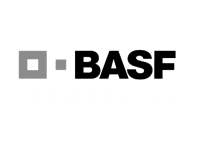
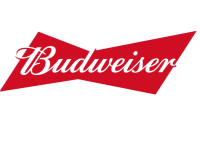
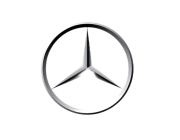


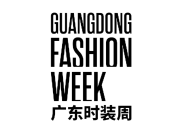
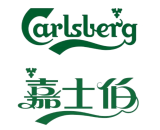

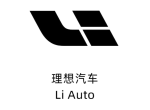
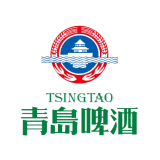
Feedback From Our Customers
Customers from Indonesia
Project Background
As the lead contractor for a 4,000-seat municipal sports stadium renovation, we partnered with Guangzhou Bozo Tent Co., Ltd to install a tensile membrane roof over the grandstand bleachers.
The project aimed to modernize the 30-year-old facility with a weatherproof, aesthetically striking canopy while adhering to tight budget and timeline constraints.
Why We Chose Guangzhou Bozo Tent Co., Ltd
After evaluating 5 suppliers, Bozo Tent stood out for:
Technical Expertise: 15+ years specializing in large-scale tensile structures.
Certifications: ISO 9001, CE, and SGS fire-resistance compliance (Class B1).
Custom Solutions: Willingness to adapt their PTFE/PVC hybrid membrane for our unique wind load requirements.
Bozo has a team of project engineers with proven architectural skills who are ready to fully support your projects and activities.
When you are ready to start your next business, contact us today and our architects and engineers will provide you with a quote as quickly as possible.
Over 20 Years of Brand History
200+ Partners
100+ Country Shipments
1000+ Project Service Experience
Contact Us By
Email: pangantoni6866@gmail.com
Tel: +8615777444557
Whatsapp: +8615777444554
Address: No.3 Min’an Road, Dagang Town, Nansha District, Guangzhou City, Guangdong Province, China
Contact Us
FAQ
1. What is Tensile Fabric Structure and How Do They Work?
Tensile fabric structure is lightweight, tension-based architectural systems that use high-performance membranes stretched over steel or aluminum frameworks.
Unlike traditional rigid roofs, these structures rely on pre-stressed fabric and geometric curvature (hyperbolic paraboloid or cone shapes) to distribute loads efficiently.
Core Components:
Membrane Material: PTFE fiberglass, PVC-coated polyester, or ETFE foil.
Support System: Steel cables, masts, or perimeter trusses.
Anchors: Ground-fixed or weighted foundations.
Engineering Principles:
Tension vs. Compression: The fabric carries tensile forces, while compression is managed by masts or arches.
Dynamic Load Handling: Curved surfaces shed snow/rain and minimize wind resistance (up to 120 mph wind ratings).
Common in stadiums, airports, and eco-resorts, tensile structures offer 30–50% cost savings over conventional roofs for spans exceeding 100 feet.
Explore our Case Studies for iconic projects like Denver International Airport.
2. What is the Advantages of Tensile Fabric Structure Over Traditional Roofs?
Tensile membranes outperform traditional materials in multiple ways:
A. Cost Efficiency
Reduced Material Use: 1/10th the weight of concrete, lowering foundation costs.
Faster Installation: Prefabricated components cut construction time by 40%.
B. Design Flexibility
Organic shapes and translucency (5–15% light transmission) enable creative branding or daylight harvesting.
Modular scalability for expansions.
C. Sustainability
Reflective coatings reduce HVAC loads (up to 25% energy savings).
100% recyclable membranes (e.g., ETFE).
D. Durability
25–30+ year lifespan with PTFE membranes.
Fire-resistant (Class A ratings) and mold-proof.
For a detailed comparison, download our Tensile vs. Metal Roofs Guide.
3. What Materials Are Used in Tensile Fabric Structure?
Three primary materials dominate the market:
1. PTFE-Coated Fiberglass
Pros: Non-combustible, UV-stable, 25+ year lifespan.
Cons: Higher upfront cost (30–30–50/sq ft).
Uses: Airports, stadiums.
2. PVC-Coated Polyester
Pros: Affordable (8–8–15/sq ft), customizable colors.
Cons: 15–20 year lifespan; requires UV inhibitors.
Uses: Temporary event tents.
3. ETFE Foil
Pros: 95% light transmission, self-cleaning surfaces.
Cons: Complex installation;
40–40–70/sq ft.
Uses: Botanical gardens, retail atriums.
Emerging Options: Photovoltaic-integrated membranes and TiO2-coated fabrics for air purification.
4. How Long Do Tensile Fabric Structure Last?
Lifespan varies by material and climate:
Material Avg. Lifespan Key Degradation Factors
PTFE 25–35 years Hail damage, acid rain
PVC-Polyester 10–20 years UV exposure, abrasion
ETFE 30+ years Mechanical stress
Maintenance Tips to Extend Longevity:
Annual inspections for tears or sagging.
Clean with pH-neutral solutions to prevent coating wear.
Retension cables every 3–5 years.
Warranties typically cover 10–15 years for PTFE systems.
5. Can Tensile Fabric Structure Withstand Extreme Weather?
Yes, when engineered properly:
Snow Loads:
PTFE membranes handle up to 45 psf (pounds per square foot) via steep curvature.
Heating cables prevent ice buildup.
High Winds:
Aerodynamic shapes reduce uplift forces.
Anchors rated for 1.5x local wind speed requirements.
Seismic Zones:
Flexible frameworks absorb ground motion better than rigid structures.
Case Study: The Khan Shatyr Tent (Kazakhstan) survives -40°F winters and 90°F summers.
6. What Are the Most Common Applications of Tensile Fabric Structure?
A. Commercial
Retail shade canopies (e.g., mall entrances).
Corporate pavilions with branded graphics.
B. Public Infrastructure
Bus/train stations (e.g., Dubai Metro).
Sports arenas (Allianz Arena roof).
C. Residential
Pool covers, solar pergolas.
D. Environmental
Rainwater harvesting membranes.
Agricultural shade systems.
7. How Much Do Tensile Fabric Structure Cost?
Costs depend on scale and complexity:
Project Type Cost Range (per sq ft) Key Cost Drivers
Small Canopy (PVC)
15–15–25 Custom shapes, anchors
Mid-Sized Pavilion
30–30–50 ETFE, mechanical systems
Stadium Roof (PTFE)
60–60–100+ Engineering fees, cranes
Budget-Saving Tips:
Opt for prefabricated kits for standard designs.
Use PVC instead of PTFE for sub-10-year projects.
Request a Custom Quote for your project specifics.
8. Is Tensile Fabric Structure Environmentally Sustainable?
Tensile fabrics score high in green building certifications:
LEED Credits: Energy efficiency (EQ), recycled content (MR).
Circular Economy: ETFE is 100% recyclable; PVC recycling programs exist.
Carbon Footprint: 60% lower embodied carbon vs. steel roofs.
Innovations:
Bio-based membranes (algae-derived polymers).
Solar-reactive coatings that generate electricity.
9. How Is Tensile Fabric Structure Designed and Engineered?
The process involves:
1. Computational Modeling
Finite Element Analysis (FEA) to simulate wind/snow loads.
3D form-finding software (e.g., Rhino + Kangaroo).
2. Fabrication
CNC-cut panels with welded seams.
Anti-ponding features (≥1:12 slope).
3. Installation
Tensioning via hydraulic jacks (±2% tolerance).
Work only with AIA-certified tensile specialists to avoid safety risks.
10. What Are the Limitations of Tensile Fabric Structure?
Challenges to Consider:
Acoustic Performance: Membranes amplify noise; require sound-absorbing liners.
Insulation Limits: R-values max at 4.0 without secondary layers.
Local Codes: Some regions restrict non-rigid roofs for fire safety.
Mitigation Strategies:
Add composite insulation panels.
Install sprinkler systems for fire compliance.

